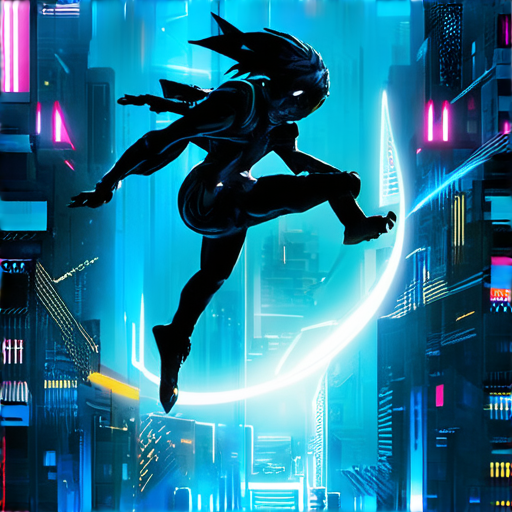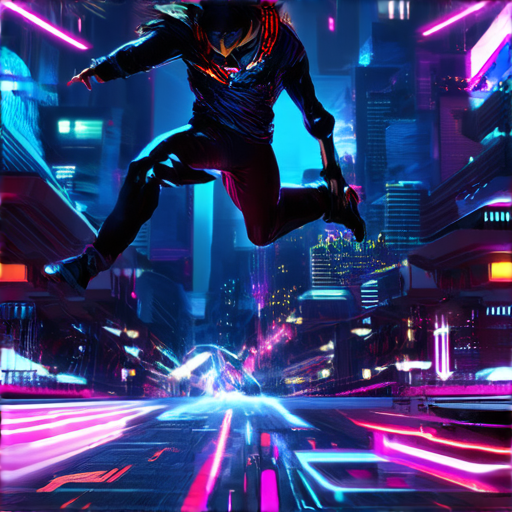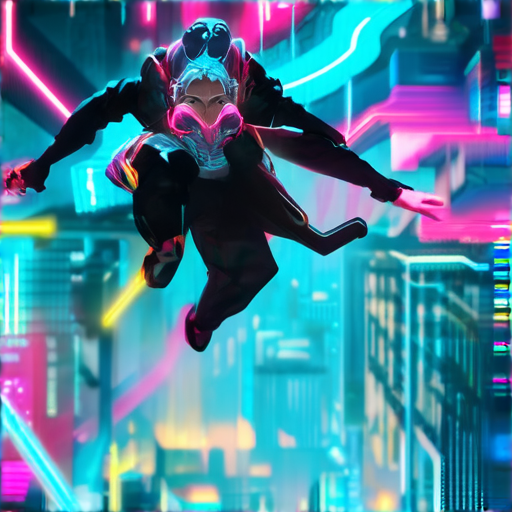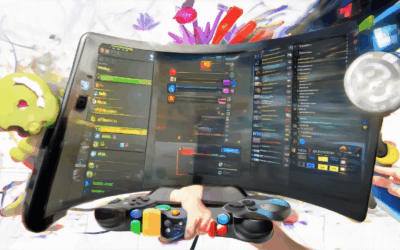Character movement in games has evolved significantly over the years, becoming a cornerstone of immersive experiences across various genres. From the fluidity of open-world exploration to the precise controls of action games, the way characters navigate virtual environments plays a pivotal role in shaping gameplay dynamics. Whether it’s the realistic physics of simulation games or the dynamic combat systems in RPGs, understanding the mechanisms behind character movement is essential for both players and developers alike. This article delves into the intricate details of character movement in games, exploring everything from foundational principles to cutting-edge implementations. By examining the technical aspects, design considerations, and real-world applications, we aim to provide a comprehensive overview of how movement defines the interactive experience in modern gaming.

How Do Characters Move in Games?
Game developers implement motion in characters through various techniques to create smooth and lifelike movements. Two primary methods are commonly used:
- Manual Keyframing: This involves defining each frame of movement precisely, allowing for exact control over how the character moves. Every position, rotation, and animation state is set manually, which provides high customization but requires significant time and effort.
- Motion Capture: This method records real-world movements, typically using markers attached to a subject, and then applies these captured motions to the character model. It is often used for realistic movements, such as those seen in sports games or action titles.
Both methods can be used independently or combined to achieve the desired effect. For example, manual keyframing might be used for complex sequences, while motion capture could handle more nuanced, realistic movements. This hybrid approach allows for greater efficiency and realism in character animation.
Resources for Developers
If you’re looking to dive deeper into character animation, Indie Dev Games offers valuable resources, tutorials, and community support tailored for independent game developers. Whether you’re working on a 2D platformer, an RPG, or a mobile game, their platform provides insights and tools to enhance your project.
Additionally, platforms like Unity and Unreal Engine offer powerful animation systems that streamline the process, making it easier to create smooth character movements while maintaining creative control.
What Are Character Movements?
Character movements in video games refer to the methods by which characters navigate and interact within a virtual environment. These systems are crucial for creating immersive experiences, allowing players to control protagonists in various ways. Below is a breakdown of the essential components and types of character movements:
Types of Character Movements
1. **Locomotion**: Locomotion refers to how characters move from one location to another. Common methods include walking, running, climbing, jumping, and swimming. Advanced systems may incorporate parkour or free-running mechanics for more dynamic movement.2. **Combat Movements**: Characters often engage in combat, requiring precise movement to dodge attacks, block, or perform special abilities. Examples include evasive maneuvers, parries, and counters.3. **Environmental Interaction**: Characters interact with their surroundings, such as climbing walls, opening doors, or manipulating objects. This adds depth to gameplay by allowing players to solve puzzles or navigate obstacles.4. **State Management**: Characters have states that affect their movement, like being injured, tired, or carrying heavy items. These states influence speed, agility, and available actions.
Popular Game Engines for Character Movement
Many game engines offer robust character movement systems, catering to indie developers. Here are some notable examples:- **Unreal Engine**: Known for its physics-based movement, Unreal Engine supports complex animations and interactions. Its Character Movement Component enables features like walking, falling, swimming, and flying. – **Unity**: A popular choice for indie developers, Unity offers flexible character controllers and ragdoll physics. It allows for custom movement scripts and integrates well with other development tools.- **Havok**: Havok provides high-fidelity physics solutions, enabling realistic movement and collisions. Many AAA titles rely on Havok for their character dynamics.
Improving Character Movement in Indie Games
To enhance character movements in your indie game, consider the following tips:1. **Physics Engines**: Implement a physics engine like Havok or Bullet Physics for realistic movement and interactions. This adds authenticity to your game’s feel.2. **Animation Layers**: Use animation layers to blend pre-recorded animations with real-time controls, allowing for smooth transitions during combat or movement.3. **Collision Detection**: Ensure accurate collision detection to prevent clipping or unrealistic interactions. Fine-tune this for a polished player experience.4. **Movement Puzzles**: Incorporate environmental challenges that require players to use their character’s abilities creatively.
Resources for Indie Developers
For more insights into character movement systems, visit [Indie Dev Games](https://indiedevgames.com/) to explore tutorials, reviews, and tips tailored for indie developers. Discover how to implement advanced movement mechanics and optimize performance for your projects.By mastering character movements, you can elevate your game’s replayability and engagement, making it stand out in the competitive indie scene.
What is Movement in a Game?
Movement in video games is a fundamental aspect that defines how players interact with the environment and progresses through levels. It is often the backbone of gameplay mechanics, enabling exploration, combat, and strategic positioning. A well-designed movement system enhances immersion and provides a seamless experience, while a poorly implemented one can feel clunky or frustrating.
Overview of Movement Mechanics
Movement in games can be broadly categorized into core gameplay movement, combat movement, and exploration movement. Each type serves a unique purpose and contributes differently to the overall game design:
- Core Gameplay Movement: This includes basic movements like walking, running, jumping, and climbing. It forms the foundation of exploration and navigation through environments.
- Combat Movement: In fighting games or action titles, combat movement refers to dodging, strafing, and precise controls required to defeat enemies. It often requires quick reflexes and precise timing.
- Exploration Movement: Movement designed to allow players to traverse maps efficiently, often involving platforming elements or long-distance traversal.
Types of Movement Systems
Different games employ various movement systems to suit their unique playstyles. Here are some common approaches:
- Simple Linear Movement: Characters move in straight lines, either forward, backward, or sideways. This is common in many 2D games.
- Nonlinear Movement: Players can move in multiple directions, often influenced by environmental factors like slopes or obstacles. This adds complexity and realism.
- Physics-Based Movement: Advanced games use realistic physics engines to simulate movement, allowing for effects like gravity, momentum, and collision detection.
- Combo-Based Movement: In fighting games, movement is often tied to combos, requiring precise timing and chaining of moves for offensive purposes.
The Impact of Movement Design
Effective movement design enhances gameplay by providing:
- Freedom of Movement: Players should feel empowered to navigate environments naturally.
- Control Precision: Movement controls should be responsive and intuitive, reducing frustration during gameplay.
- Progression Systems: Movement abilities can be upgraded or unlocked as players advance, adding depth to character development.
- Aesthetic Experience: Smooth and fluid movement contributes to the visual appeal of the game.
Design Considerations for Movement
When designing movement systems, consider the following principles to optimize player experience:
- Customization Options: Allow players to adjust movement settings, such as speed or sensitivity, to suit their preferences.
- Balance and Difficulty: Ensure movement is neither too easy nor too challenging, maintaining a healthy challenge curve.
- Intuitive Controls: Design controls to be accessible while still offering depth for skilled players.
- Environmental Interaction: Incorporate interactive elements that reward creative use of movement, like leveraging physics-based interactions or environmental hazards.
Examples of Movement in Popular Games
Examining successful games can provide valuable insights:
- Super Mario Bros.: Movement is simple but effective, combining jumping and platforming to create fun and engaging gameplay.
- Dark Souls: Movement is challenging, requiring precision and awareness of enemy attack patterns to survive.
- Half-Life 2: Physics-based movement adds realism, allowing for dynamic interactions with the environment and objects.
- Animal Crossing: Movement is relaxed and methodical, emphasizing exploration and discovery in a peaceful setting.
Future Trends in Movement Design
As technology advances, movement systems in games are likely to become more sophisticated:
- Virtual Reality (VR): Movement in VR games will involve spatial awareness and teleportation options for better immersion.
- Augmented Reality (AR): AR games may combine physical movement with digital elements, creating hybrid gameplay experiences.
- AI-Driven Movement: Advanced AI could enable smarter pathfinding and adaptive movement for non-player characters.
Movement is a critical component of game design, influencing everything from gameplay mechanics to player experience. By focusing on smooth, intuitive, and customizable movement systems, developers can create games that are not only fun but also deeply immersive and rewarding to play.

How to Make Movement Feel Good in Games
To make movement feel good in games, consider the following key aspects:1. **Physics Implementation**: Ensure realistic physics engines are used to simulate movement accurately. Proper handling of gravity, friction, and collisions is essential for natural-feeling movement.2. **Smooth Animations**: High-quality animations that appear fluid and natural contribute significantly to the feel of movement. Consider using motion capture data for more lifelike animations.3. **Reduced Input Lag**: Optimize code and rendering techniques to minimize latency, ensuring button presses are registered quickly and smoothly.4. **Customizable Controls**: Allow players to adjust sensitivity and control settings, making the experience more accessible and enjoyable for different playstyles.5. **Intuitive Camera Controls**: Design a camera system that moves smoothly and accurately, enhancing immersion and gameplay comfort.6. **Visual Feedback**: Provide immediate visual cues when actions are taken, reinforcing the sense of control and movement.7. **Thorough Testing and Iteration**: Continuously gather player feedback through playtesting to identify and address any issues in movement mechanics.By focusing on these elements, developers can create a more enjoyable gaming experience with fluid and responsive movement.
What Makes a Good Movement System?
A well-designed movement system in a game is essential for creating a seamless and enjoyable experience. Here are the key components that define a good movement system:1. **Responsiveness**: The movement system should feel fluid and immediate. Smooth animations and quick reaction times are crucial to prevent frustration and enhance immersion. https://indiedevgames.com/2. **Customization**: Allow players to tailor their movement style to suit their playstyle. This can include adjusting speed, acceleration, and even enabling or disabling certain movement abilities. https://indiedevgames.com/3. **Balance**: Movement mechanics must be carefully tuned to ensure they complement the game’s other systems, such as combat or exploration. Overpowering or underpowered movement can disrupt gameplay balance. https://indiedevgames.com/4. **Contextual Awareness**: Movement should adapt to the environment. For example, players might need to crouch in narrow spaces or jump over obstacles in open areas, adding depth to gameplay. https://indiedevgames.com/5. **Visual Feedback**: Clear visual cues indicate successful movement. This helps players understand their actions and reinforces the game’s mechanical depth. https://indiedevgames.com/6. **Adaptability**: The movement system should accommodate different playstyles. Whether a player prefers precision or simplicity, the system should offer options to suit their preferences. https://indiedevgames.com/7. **Realism vs. Arcade Style**: Decide whether to aim for realistic movement (e.g., realistic walking speed, gravity effects) or an arcade-style feel (e.g., double jumps, faster movement). This choice aligns with the game’s thematic direction. https://indiedevgames.com/8. **Genre Consideration**: Tailor the movement system to the game’s genre. Action games may require quicker, more responsive controls, while RPGs might benefit from a more complex, skill-based system. https://indiedevgames.com/By focusing on these elements, developers can create a movement system that feels natural, engaging, and tailored to the game’s unique requirements.
How Can I Be the Best Gamer Ever?
To become the best gamer ever, focus on consistent practice, continuous learning, and staying updated with the latest trends in gaming. Here’s a step-by-step guide to help you excel:1. **Choose Your Game Genre Wisely**: Whether it’s PC games, console games, mobile games, or cloud-based games, select a genre that aligns with your interests and skills. Dive deep into that niche to master it.2. **Master Your Platform**: Whether you’re playing on a PC, console, or mobile device, understand the mechanics and controls of your platform. Practice regularly to improve your reflexes and precision.3. **Practice Regularly**: Gaming isn’t just about talent; it’s about practice. Dedicate time daily to play and improve your skills. Even if you lose, analyze what went wrong and learn from it.4. **Learn From Professionals**: Study gameplay videos, streams, and tutorials from top players. Observe their strategies, techniques, and habits to mimic and refine your own approach.5. **Join Gaming Communities**: Engage with online forums, Discord groups, and Twitch chats to connect with fellow gamers. Share your experiences, ask questions, and learn from others’ tips and tricks.6. **Set Realistic Goals**: Define short-term and long-term goals. Whether it’s mastering a specific map or achieving high ranks in competitive matches, having clear objectives will keep you motivated.7. **Stay Updated on Trends**: Keep an eye on the latest games, updates, and events. Attend gaming conventions, follow gaming news, and participate in beta tests to stay ahead of the curve.8. **Experiment with Different Styles**: Try various gaming styles, such as casual, competitive, or creative modes. This versatility will help you adapt to different challenges and opponents.9. **Utilize Resources**: Leverage gaming guides, walkthroughs, and training tools to enhance your skills. Platforms like Indie Dev Gamesoffer valuable resources for game developers and enthusiasts.10. **Stay Positive and Enjoy the Journey**: Gaming is a hobby, not a race. Enjoy the process, stay passionate, and keep pushing yourself to get better without pressure.By following these steps, you’ll not only improve your gaming skills but also enjoy the journey of becoming a proficient and enthusiastic gamer. Remember, consistency and passion are key to becoming the best gamer ever!




0 Comments